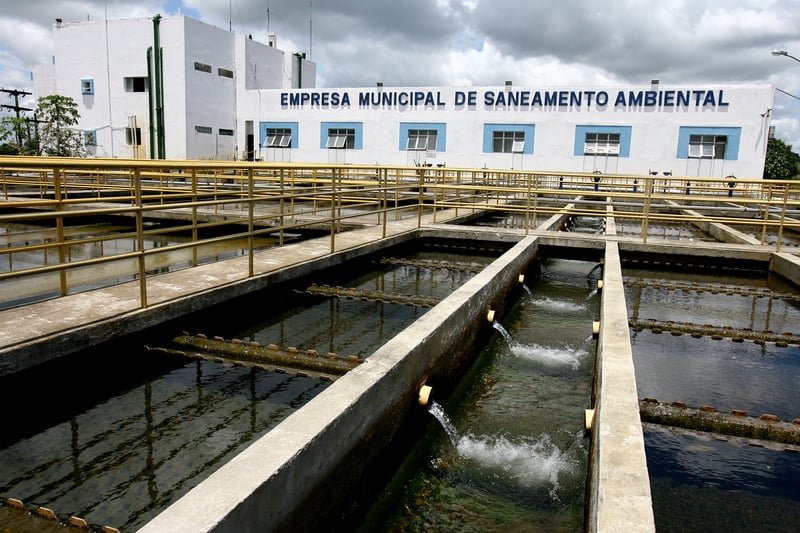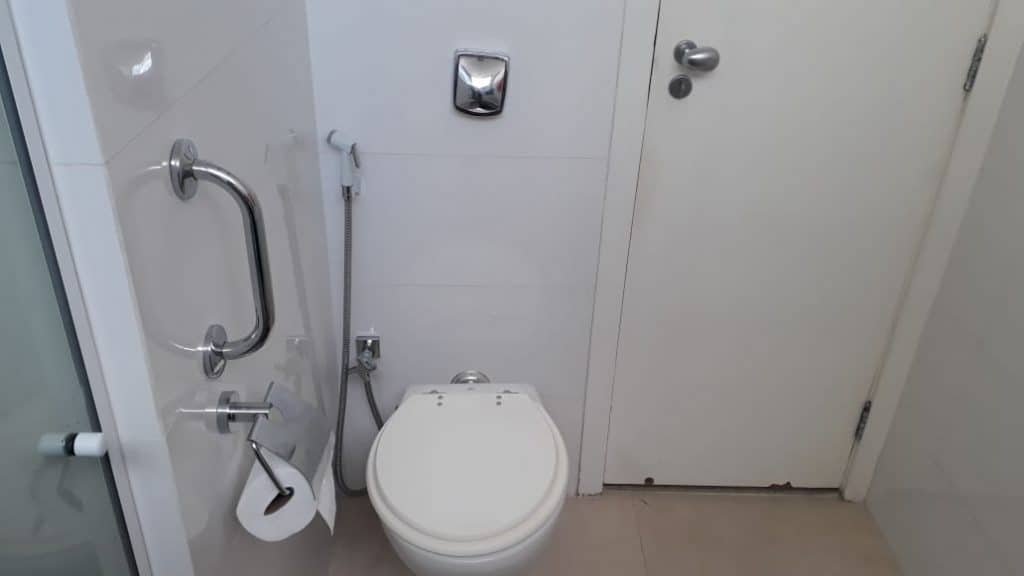Many tourists are surprised when they find out a good portion of Brazilians throw the toilet paper in a bin inside their bathrooms instead of just flushing it away. Many countries worldwide have different takes on which approach is best, and Brazil stands somewhat in the middle.
Yes, you can flush toilet paper in Brazil, but not on all occasions. It depends on where you are and the customary habit in that place, as it takes knowledge of the area’s plumbing and sewer system to make the proper discard.
In this post, we’ll break down the dos and don’ts of flushing toilet paper in Brazil, in which cases you should discard in the bathroom bin, and why this is such a taboo in the country.
Flushing Paper X the Bathroom Bin
Over half of the Brazilian households have access to a sewage collecting system, which means these places use septic tanks and containers buried underground with corrosive substances to digest solids, offering a safer way to dispose of the material in the environment.
This situation is more commonly seen in buildings and condos. They have a more powerful sewage system with higher water pressure, allowing any remaining solids to be pushed down the pipes and reach the treatment system. In other words, making it safe to flush down the paper.
On the other hand, in many Brazilian houses and small residences, it’s not unusual to spot a little bin by the toilet, indicating that the paper should be thrown in and not flushed.
It is also a habit in many Brazilian households and public bathrooms to leave a small sign inside the bathroom, requesting not to throw any paper in the toilet.
This probably means that the water pressure in the location must be low or the pipes are not proper to deal with solids, may being able to cause unwanted clogging issues.
In old buildings, the use of toilet bins is also sometimes noticed due to the old plumbing system made in curves, making it easier for the same aforementioned issues to occur.
So if you’re staying in one of those, make sure to ask the building’s janitor what’s the common bathroom etiquette for proper toilet paper disposal there.
SABESP, a sanitation company located in São Paulo, states that the ideal situation is for the paper to be flushed down the toilet. Still, unfortunately, not all Brazilian households have proper sewage systems to handle the disposal.
The Brazilian company also says that only toilet paper is supposed to be flushed, as it easily dissolves in sewage systems that support it.

Other residuals like dental floss, hair, disposable razor blades, cigarette butts, condoms, and tampons are considered the main reason why there are obstructions in the sewage system. Therefore, these should be dumped in the bin.
Flushing Paper X Sustainability
Many Brazilians and worldwide NGOs and environmental movements and entities encourage people to stop flushing the toilet paper, as leads and contributes to several environmental issues. Here a few of the major problems exposed:
Save Water
Each time you flush, a lot of clear water is discarded, with each time you press the button, you can waste between 1,5 to 3,2 gallons of water, depending on how old the devices are.
Combined with every other time water is necessary to perform our daily activities, those gallons can represent a lot.
Unlike in many countries, Brazilian toilets only have one button instead of two – one that uses more water than the other, depending on your need -, so there’s no real user control on how much water will be wasted.
In sum, constant flushing elevates water use and consumption, which can lead to water waste. If we consider ONU’s guidelines for ideal daily water consumption (29 gallons per day), flushing the toilet twice a day can use 3 to 3,5 gallons of water.
Based on that, it’s easy to guess other activities like laundry and washing the dishes can waste a lot more water, so a full review of how we use water daily is necessary to achieve the 29-gallon mark.
Less Paper, More Nature
In addition to water waste, there’s also a growing concern regarding the excessive use of toilet paper in Brazil and in other countries around the globe, which is exponentially growing across the globe.
The World Wide Fund for Nature (WWF) has shared that over 27 thousand trees are cut every day in order to produce toilet paper alone.
Although this is a valid concern, we’re still far away from a solution. Companies are still developing sustainable and sanitary ways of disposing of contaminated matter without prejudicing the environment.
Contaminated Matter Manipulation
Another issue raised regarding the use of toilet paper is the manipulation of fecal and urinal matter, which goes against what the Health Surveillance advises. Improper disposal can lead to contamination, endangering the population’s health.
Associated with that, used toilet papers are usually disposed of in toilet bins with a plastic bag, which on one side guarantees no one will manipulate contaminated matter, but on the other, leads to the problem of plastic bags taking over 100 years to decompose in landfills.
In regions with low education and more precarious sanitary conditions, people even throw out the trash in the sewers, contributing to episodes of great floods (common in parts of the country for this exact reason) and diseases being spread.
Alternatives
Many tourists are weirded out at first with the disposal of used toilet paper in the bathroom bin, as having to manipulate this type of material is not common in their home countries. So here’s a shortlist of alternatives if you don’t feel comfortable with this practice:
Bidets
While being largely absent in most households in Brazil, there are still places that maintained the good old fashioned bidet, making it possible for people to clean up without using and disposing of toilet paper.
A bidet is like a sink, but for your private parts, where you can clean yourself with water and use a towel to dry it out afterwards. No toilet paper disposal.
Shower Hoses
If there are no bidets where you’re staying, don’t worry! For the most part, they were replaced by shower hoses due to the latter occupying far less space in the bathroom while proceeding to execute the same job.
A good portion of Brazilian households has these hygienic shower hoses, making for another alternative way of avoiding toilet paper flushing.

Portable Cleaners
“OMG, there are no bidets or shower hoses; what do I do”? Worry not, my friend, as there are types of portable devices in lieu of the bidets and hoses.
These can be bought in any pharmacy around the country but it is not a common thing to be used, to be honest.
If you’re unable to get one, you can also DIY-it using a squeeze or pet plastic bottle. Remember to change the bottle from time to time, as it can gather bacteria and other harmful organisms.
In sum, flushing down the paper is more sanitary, but only allowed when you’re sure that the local sewage system works, the plumbing can handle it, and if there is good water pressure in the toilet’s flush.
Other than that, stick to the bathroom bin while you’re in Brazil, or use one of the alternative methods we’ve described above!
And if you are moving or visiting Brazil and wondering about other cultural traits, we think these other articles might also interest you:
Brazilian Wedding: Should I Wear Formal Attire? – Attending a wedding in Brazil and don’t know what to wear? Don’t worry, we got your back!
One Way Tickets: Am I Allowed In Brazil Without A Return Date? – Planning on coming to Brazil but not sure when you’re returning? We’ll clear all your questions in this post!
Top 10 Safest Beaches In Brazil: Crime, Sharks, Waves – Sometimes, all we want to do is soak up the sun and not worry about a thing, right? Come find out the safest beaches to relax and enjoy yourself in Brazil! We also listed environmental threats such as pollution in this article.
Cover Image: green frog on the toilet – Credit: PxHere
